Many of the millions of visitors to the Lake District come in search of places connected to the area’s most famous writer, Beatrix Potter. SARAH FRENCH drops in on some of the locations that featured in the life of the author and her characters.

HILL TOP FARM, NEAR SAWREY
Beatrix once described Near Sawrey “as nearly perfect a little place as I ever lived in”. The most obvious – and for many the favourite – place for Beatrix Potter lovers is Hill Top, the 17th century farmhouse and garden in the village that inspired many of her stories.
Beatrix bought it in 1905 (when she was nearly 40) with royalties from her first book, The Tale of Peter Rabbit, and much of the interior of the house, the garden and surrounding countryside feature in many of her subsequent titles.
The stone flagged floor in the entrance hall and the 18th century stair rail and balusters feature in The Tale of Samuel Whiskers. The garden, which Beatrix planned and laid out, appears in The Tale of Tom Kitten, which still informs Hill Top’s gardeners today.
The house contains original items and some artwork previously held at the Beatrix Potter Gallery, in Hawkshead. Formerly the office of Beatrix’s husband William Heelis, it is now closed.
Beatrix never lived at Hill Top – which is owned by the National Trust – but she did work there and lived within sight of it across the field at Castle Cottage, which she bought in 1909. After she married local solicitor William in 1913, Castle Cottage became the couple’s home, and it was where Beatrix died in 1943 at the age of 77.

IN AND AROUND NEAR SAWREY
Moss Eccles Tarn was one of Beatrix’s favourite places and, in 1913, she bought part of it. She rowed her small boat on the tarn, planted the water lilies and stocked it with fish. On summer evenings Beatrix would sketch while William tried to catch trout.
Beatrix’s boat was salvaged from the tarn in 1976 and can be seen as part of the collection at the Windermere Jetty Museum.
The track from the village towards the tarn appears in The Tale of Jemima Puddle-Duck and The Tale of Samuel Whiskers.
Tower Bank Arms is the village pub next to Hill Top and its frontage is little changed since Beatrix painted it as an illustration in The Tale of Jemima Puddle-Duck.
Ees Wyke, now a country house hotel, was known as Lakefield when Beatrix stayed there on holiday before she bought Hill Top. Letters to her publisher, Frederick Warne, reveal that she edited The Tale of Peter Rabbit while staying at Ees Wyke. The house overlooks Esthwaite Water, which appears in The Tale of Jeremy Fisher.
towerbankarms.co.uk
eeswyke.co.uk

WRAY CASTLE
Beatrix first visited the Lake District in 1882 at the age of 16 when her father rented Wray Castle on the shore of Lake Windermere for the family’s long summer holiday. This visit introduced Beatrix to the lakeside scenery that would become the setting and inspiration for so much of her best-loved work.
It was also where she first met Canon Hardwicke Rawnsley, one of the three founders of the National Trust in 1895, whom the Potters invited to a dinner party. Almost 20 years earlier, Rawnsley had moved to Cumbria, aged 26, to be vicar at Wray Church, on the Wray Castle estate.
The first published author Beatrix had met, he praised her artwork and encouraged her interest in animals and plants becoming a friend and mentor.
nationaltrust.org.uk/visit/lake-district/wray

THE ARMITT, AMBLESIDE
Beatrix Potter’s ‘little books’ clearly highlight her talent as an artist, a skill which she developed in her early years. She was especially interested in fungi from the tales of fairy rings and toadstools she was told as a child and became particularly adept at drawing and painting them. From the late 1880s to the turn of the century Beatrix produced hundreds of finely detailed and botanically correct drawings of fungi, the detail gained apparently by dissecting and studying them under a microscope. The majority of these artworks are in The Armitt’s collection, to which they were bequeathed on her death in 1943.
Beatrix was an early member and major benefactor of The Armitt and as well as her leaving her exquisite drawings and watercolours she also bequeathed her personal first editions of her books.
Some of her botanical drawings can be seen in the Under the Microscope exhibition which continues at The Armitt during 2024.
armitt.com
YEW TREE FARM, NEAR CONISTON
Yew Tree Farm was one of the properties Beatrix owned as part of the Monk Coniston estate, which she acquired in 1930 with an agreement to sell half of it to the National Trust as soon as it had the funds; the rest was bequeathed to the Trust on her death.
Mrs Heelis, as she was by then, helped the Trust’s tenants set up a tearoom in the parlour of the farmhouse, furnishing it with her own pieces and a collection of curios that would be of interest to passing tourists.
Yew Tree Farm, which has continued as a working farm of 700 acres, famously appeared in the film, Miss Potter, playing Hill Top. The small field in front of the farmhouse transformed into her productive cottage garden for the movie.
Over the years the farm has welcomed many famous visitors, including HM the Queen. Yew Tree Farm is available for holiday rental, its interior – all dark oak panelling, wooden floors, beams and open fires – retains the charm and character from when Beatrix owned it but with modern upgrades.
The farm is also home to Heritage Meats and its onsite butchery shop is the place to stock up on award-winning meat produced on the farm including Belted Galloway beef and Herdwick hogget and mutton, which helps to ensure that Beatrix’s special breed continues to thrive. Visitors can also learn about and get close to the sheep with a Herdwick Experience and buy art by Jo McGrath who lives at the farm with her husband Jon Watson.
yewtree-farm.com

LINGHOLM
After Beatrix’s first holiday to Wray Castle, the family returned to the Lake District for several more summer breaks. Ten of these – during a 22-year period between 1885 and 1907 – were spent at Lingholm, a grade II listed Victorian house built in 1873 and estate on the shore of Derwentwater, near Portinscale.
Arriving at Lingholm for the first time at the age of 19, Beatrix is said to have fallen in love with the area and she found inspiration for many of her early books on these holidays. The Lingholm Kitchen Garden was the original inspiration for Mr McGregor’s garden in The Tale of Peter Rabbit and the setting for The Tale of Benjamin Bunny was inspired by the neighbouring estate of Fawe Park, where the family stayed in 1903.
Mr McGregor’s garden was a combination of several gardens that she knew, but in a letter to her publisher in 1942 she wrote: “If the vegetable garden and wicket gate were anywhere it was at Lingholm near Keswick; but it would be vain to go and look for it there as a firm of landscape gardeners did away with it, and laid it out anew with paved walks etc.” It does not require too much imagination to conjure up a naughty rabbit nibbling the vegetables in Lingholm’s Walled Garden today.
The first Peter Rabbit book was published privately by Beatrix and when the printers sent her the original, coloured frontispiece for the book, it came to her at Lingholm.
Beatrix also produced two paintings of Lingholm, the outside of the main house and an interior view. She used an attic room as her studio, which today is a bedroom in the Skiddaw holiday apartment, one of 12 holiday houses, cottages, apartments and boat house on the estate.
thelingholmestate.co.uk
DERWENTWATER
The Lingholm woods and lakeshore were the setting for 1903 book, The Tale of Squirrel Nutkin, a character who first appeared in an illustrated letter to Norah Moore, on September 25, 1901, which Beatrix wrote from Lingholm.
The letter is illustrated by 12 pen and ink sketches, including one which shows a group of squirrels on little rafts sailing across a lake. That same year Beatrix filled an entire sketchbook with studies of the wooded shores of Derwentwater which became the backgrounds for the illustrations in the book. The story centres around a group of squirrels who sail across to Owl Island (accepted to be St Herbert’s Island in real life) to seek permission from Old Brown the owl to gather nuts.
The area around Derwentwater continued as a setting for future books and Beatrix’s natural history studies appeared in her illustrations throughout.
NEWLANDS VALLEY
The valley to the west of Derwentwater is famously the home of Mrs Tiggy-Winkle, who was based on Beatrix’s pet hedgehog. The little girl in the story was inspired by Lucie Carr, the daughter of the Reverend Carr, the vicar of Newlands, whom the Potters knew through Canon Hardwicke Rawnsley. The house in the book is Skelgill Farm.

LINDETH HOWE
Beatrix bought Lindeth Howe, near Bowness-on-Windermere, in 1915 for her mother. The Potters had initially stayed there on their holidays and Beatrix illustrated The Tale of Timmy Tiptoes and The Tale of Pigling Bland while at Lindeth Howe.
When her father Rupert Potter died, Beatrix was living in Near Sawrey, on the other side of Windermere from Lindeth Howe so her mother was just a ferry-ride away.
In her book about Beatrix Potter, A Life in Nature, Linda Leer wrote: “Helen Potter lived a life of aimless ease in comfort and style at Lindeth Howe... She was amused by her little dog and her many canaries, occupied by her needlework and much fawned over by an obsequious staff.”
Now a hotel, it boasts original photographic plates of pictures and prints of the house taken by Rupert Potter, who was an amateur photographer, and copies of correspondence from the period in its collection.
Lindeth Howe has 34 bedrooms, a restaurant and extensive gardens and is well known for serving lavish afternoon teas. In 2023 it was awarded the Cumbria Tourism Wedding Venue of the Year.
lindeth-howe.co.uk

THE WORLD OF BEATRIX POTTER
The family attraction in Bowness-on-Windermere brings Beatrix’s enchanting stories to life in a charming recreation of the Lake District countryside. The exhibition features favourite characters from the books, an award-winning outdoor Peter Rabbit Garden, a character-themed café and gift shop for all generations.
Each summer, the Old Laundry Theatre auditorium (which is inside the attraction building) hosts a Peter Rabbit-based live, family show for children aged three and above. Happy Birthday Peter Rabbit was written by Roger Glossop and is directed and choreographed by Sheila Carter with music by Richard Reeday and lyrics by Sir Alan Ayckbourn.
hop-skip-jump.com

STORRS HALL, WINDERMERE
Storrs Hall, a family friendly, country house hotel on the shores of Windermere, was often frequented by Beatrix Potter. Paying homage to its famous visitor, the hotel has long offered a Tiny Tots Tea inspired by Peter Rabbit and friends but the tea has now been reinvented.
The new Tiny Tots Tea offers a feast of mini treats including bunny-shaped sandwiches, a chipolata pot, buttermilk scones with strawberry jam, a lemon mousse duckling, a cookie dough hedgehog, a white and milk chocolate mouse and a carrot cake rabbit.
The tea, which can be enjoyed on the south-facing terrace overlooking England’s largest lake, comes served on a Beatrix Potter tea set, complete with hot chocolate or a homemade fruit milkshake.
A more traditional afternoon tea is available for grown-ups.
The new Tiny Tots Tea is available to both guests and non-residents year-round and costs £14.95 per child. A grown-up’s traditional afternoon tea is £29.95 per person.
To book, visit storrshall.com or enter our competition to win a Tiny Tots Tea for a family of four.





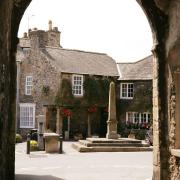

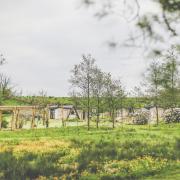

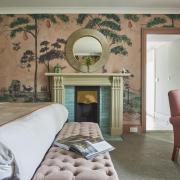
![Hampsfell [visitcumbria.com]](/resources/images/128x89/1x/18466935.jpg)
![Hampsfell [visitcumbria.com]](/resources/images/180x180/1x/18466935.jpg)

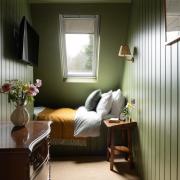



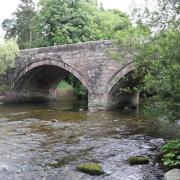

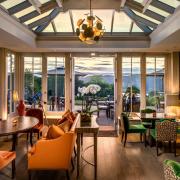



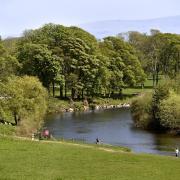


![Kirkby Lonsdale is a popular area for cycling as well as walking [Cumbria Tourism/Carlos Reina]](/resources/images/128x89/1x/18096705.jpg)
![Kirkby Lonsdale is a popular area for cycling as well as walking [Cumbria Tourism/Carlos Reina]](/resources/images/180x180/1x/18096705.jpg)
